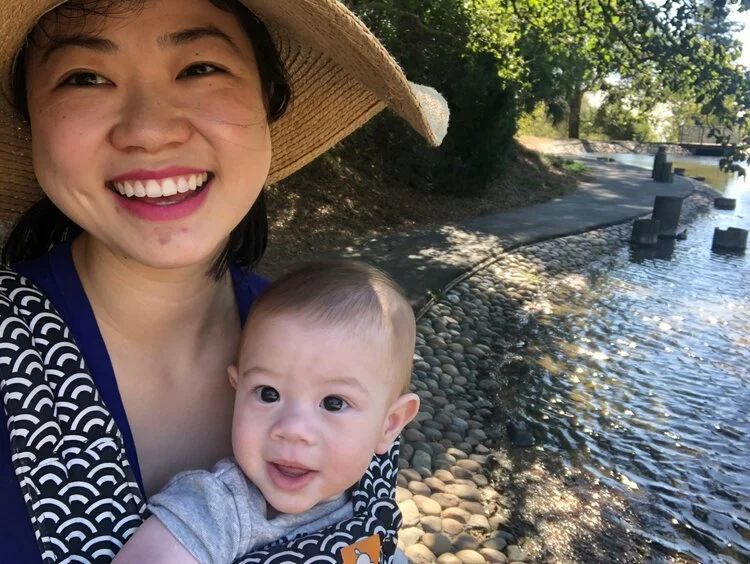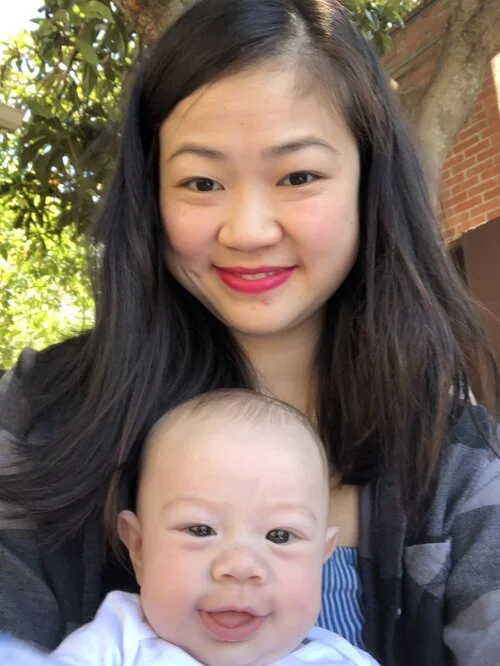Taming SI joint pain in pregnancy
Somewhere in the second trimester of my pregnancy, the surge of hormones was making itself known (hello, crunchy taco cravings!) and even my shoes were fitting tighter. That’s when my new friend, sacroiliac (SI) joint pain appeared. When I walked for too long I often felt my SI pinching on the right, accompanied with pubic symphysis pain. The SI joint ache was especially memorable because it was hard to pinpoint - it would come and go or move around my low back.
“Between 50 and 70 percent of all pregnant women report having back pain, according to the American Pregnancy Association.”
If you have low back pain during pregnancy, you’re in good company. Between 50 and 70 percent of all pregnant women report having back pain, according to the American Pregnancy Association. A good clue (but not a guarantee) that this pain is actually the SI joint is that it’s only on one side, and often made worse with standing on one leg. It can feel like stabbing or a dull ache, or something in between.
The good news is that it won’t be forever. For a majority of women, SI joint pain due to pregnancy resolves on its own after three months postpartum, with much of the remainder feeling better after a year.*
There are two major contributors to SI joint dysfunction in pregnancy:
Pelvic instability: The hormone “relaxin” circulates through the whole body in pregnancy, and creates ligament laxity. Some also call this “hypermobility.”
Falling out of neutral spine: Many women go from neutral into an anterior pelvic tilt (APT) to counter the weight of the belly. This posture sways the low back and leans the hips forward. Sometimes there is also a subtle twist in the pelvis that causes strain. (Going into APT was my tendency, especially when I was feeling tired.)
Since the SI is stabilized by muscles, feeling joint pain is mostly a sign of a muscle imbalance issue in the hips and pelvic floor. Finding the SI can be tricky - it lives on the bony plate of your sacrum, not the low back or directly on the spine. There are two bony landmarks of your ASIS in the front of your hips that you can feel. Straight behind it on the back of your pelvis is your PSIS, where the sacrum and pelvis join together.
What can help:
Connecting to your core strength will help support your hips and pelvis. Effective exercises to help you tame the pain will incorporate core activation, especially involving the transverse abdominis, or TVA. Think of lifting the abs “in and up” to find that deepest layer of your abs. Great exercises to try include bridging, lat pulls, deadlifts, and squats.
“Great exercises to try include bridging, lat pulls, deadlifts, and squats.”
It might look different for everyone, but generally, avoid one-sided weight bearing and single leg standing exercises. (That includes running because of the impact of the weight shift.) If a certain movement triggers your SI it’s a sign that there’s not enough strength to stabilize your pelvis and it’s best to avoid it for the time being.
With chronic pain, it might be worthwhile to get a diagnosis from a medical professional so you can get targeted care. Pilates can help establish a foundation in core strength and even out any imbalances in the hips, legs, and glutes. For me, practicing Prenatal Pilates was dynamic and flexible, and helped me to cope with the many transitions of pregnancy and beyond.
For a quick SI joint-focused workout, try a virtual class on our on-demand site.
*Kanakaris NK, Roberts CS, Giannoudis PV. Pregnancy-related pelvic girdle pain: An update. BMC Med 2011;9:15. doi: 10.1186/1741-7015-9-15.




